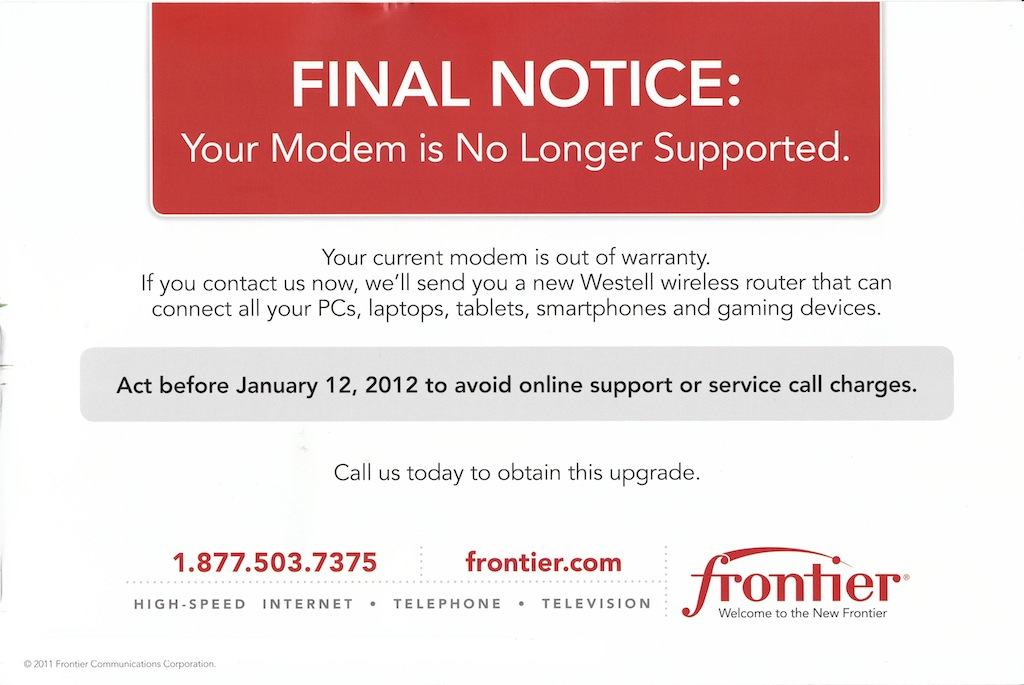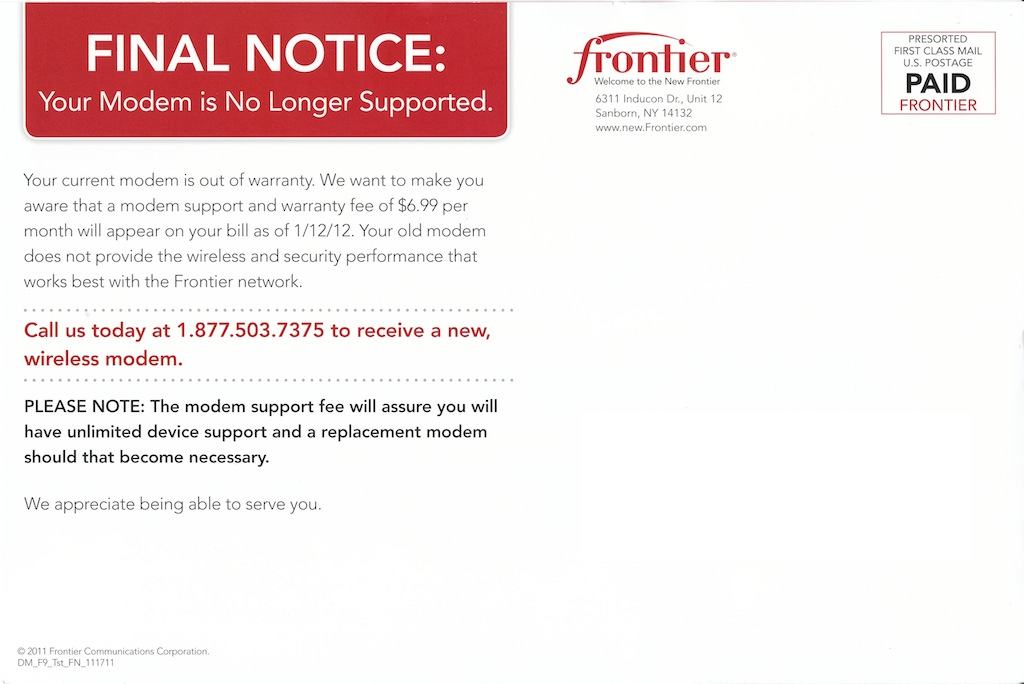 Time Warner Cable’s progression towards all-digital cable continues to spread across Maine as customers in Albion, Augusta, Belgrade, Benton, China, Clinton, Farmingdale, Gardiner, Hallowell, Litchfield, Manchester, Monmouth, Mount Vernon, North Vassalboro, Readfield, Richmond, Rome, Sidney, Vassalboro, West Gardiner and Winthrop lost many of their analog channels last week.
Time Warner Cable’s progression towards all-digital cable continues to spread across Maine as customers in Albion, Augusta, Belgrade, Benton, China, Clinton, Farmingdale, Gardiner, Hallowell, Litchfield, Manchester, Monmouth, Mount Vernon, North Vassalboro, Readfield, Richmond, Rome, Sidney, Vassalboro, West Gardiner and Winthrop lost many of their analog channels last week.
But customers losing AMC, Animal Planet, Cartoon Network, CKSH, CHLT, CNBC, E!, EWTN, GAC, Hallmark Channel, HGTV, History, HSN, INSP, NECN, Ovation, QVC, SyFy, Shop NBC, TCM, TNT, and USA also provoked the loss of something else: patience.
“Cable TV is the only service I pay for that increases my bill and frustration at the same time,” says Augusta Stop the Cap! reader Jeff E. Smith. “The digital adapter Time Warner sent me was defective right out of the box, and two of my neighbors were also sent defective units that never powered on,” Smith writes.
Time Warner Cable is dramatically reducing the analog cable lineup to make additional room for new digital HD channels and faster broadband speeds. The company is supplying palm-sized digital adapters for subscribers who don’t have a digital set top box on every television. Although free until 2014, the boxes will carry a monthly fee of $0.99 each after that.
“The upgrade gives them the chance to cram on more channels we don’t want and more expensive broadband, and yet we have to eventually pay for the equipment,” Smith says. “And it doesn’t even work right.”
Smith’s neighbors have discovered patience-testing lines at some Augusta-area cable stores as customers rushed to obtain the equipment they assumed they didn’t need.
“The neighbor’s mother-in-law doesn’t understand how to use OnStar in her car, so it was no surprise she found out she needed the equipment when most of her favorite channels disappeared,” he adds. “Time Warner really overestimated the level of understanding customers would have about this after buying new digital-TV’s a few years ago.”
Jim has several suggestions for Time Warner to adopt before the digital upgrade begins its progression across the country:
- The equipment should be free of charge and included with your regular monthly service. You can’t realistically expect to buy Time Warner Cable service without a box for every set after the digital conversion is complete, so just include the equipment;
- A better and less intrusive way to manage this would be to install a single digital converter on the outside of the home or in a closet which could provide analog service to every TV not already equipped with a set top box. That would mean no annoying box on every set in the home and would probably cost less (in time, money, and aggravation);
- People assume they are ready for digital cable because they bought digital-ready TV’s after analog television service ceased. Most customers will not read generic letters carefully. It would be better to send people customized letters telling them they specifically will need the equipment because records indicate additional outlets were installed in the home without corresponding cable set top boxes attached to them. What are the chances customers are using CableCARD units these days? Chances are, they’ll need the DTA adapters, so make this clearer.
- Don’t you dare put customers through this, increase broadband speeds, and then slap usage caps or usage billing on us!


 Subscribe
Subscribe





